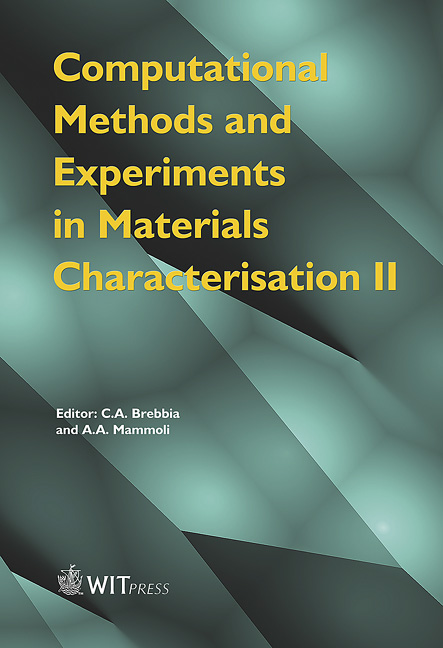Combined Use Of Mössbauer Spectroscopy And X-ray Diffraction For The Study Of Order-disorder In Tin(II)-containing Fluoride Ion Conductors
Price
Free (open access)
Transaction
Volume
51
Pages
10
Published
2005
Size
700 kb
Paper DOI
10.2495/MC050271
Copyright
WIT Press
Author(s)
G. Dénès, M. C. Madamba, A. Muntasar & Z. Zhu
Abstract
In some materials, cationic or anionic disorder can take place, and the knowledge of the extent of this disorder and how it varies with preparation conditions and temperature can be essential, since key properties of the materials can vary drastically with the presence of disorder. In addition, we have discovered a method for disordering, by ball-milling, fluoride-ion conductors, the structure of which is derived from the fluorite-type. The presence of the disorder raises critical questions about the electronic structure of tin(II) and the possibility of mixed conduction due to the unhybridized tin(II) non-bonded pair having the option to add electron motion to the fluoride-ion conductivity. The study of disordered materials by X-ray diffraction does not reveal a full understanding of the tin situation, particularly its electronic structure. In addition, in many of the ordered tin(II) containing phases, very highly enhanced preferred orientation put some limits on the usefulness of X-ray diffraction, while, however, generating new knowledge. A unique method has been designed in our laboratory to determine unambiguously the lone pair stereoactivity in disordered systems, and to use it in highly oriented systems, by use of 119Sn Mössbauer spectroscopy. Examples taken from our work on high fluoride ion conductors in the SnF2/MF2 system (M = Ca, Sr, Ba and Pb) have been studied. Keywords: fluoride ion conductors, fluorite-type structure, order-disorder, Mössbauer spectroscopy, X-ray diffraction.
Keywords
fluoride ion conductors, fluorite-type structure, order-disorder, Mössbauer spectroscopy, X-ray diffraction.





